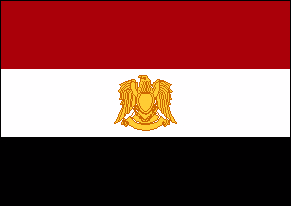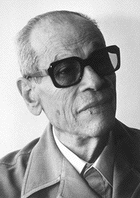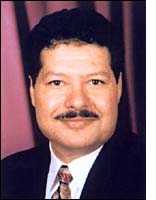
Egyptian Nobel Prize Winners

Egyptian Nobel Prize Winners
|
Peace, 1978 |
Literature, 1988 |
Chemistry , 1999 |
|
|
|
|
|
|
|
|
|
|
| Born: 25th December 1918
in Tala District, Menufia Governorate, Egypt.
Education: Military College Editor Al Jumhuriya and Al Tahrir 1955-56 Minister of State 1955-56 Vice-Chairman National Assembly 1957-60 Chairman National Assembly 1960-68 General Secretary Egyptian National Union 1957-61 Chairman Afro-Asian Solidarity Council 1961 Member Presidential Council 1962-1964 Vice-president of Egypt 1964-66, 1969-70 President of Egypt 1970-1981 Prime Minister 1973-74 Chairman Arab Socialist Union 1970 Member Higher Council on Nuclear Energy 1975 |
|
|
|
|
 |
|
|
|
|
|
Born in Cairo in 1911, Naguib Mahfouz began writing when he was seventeen. His first novel was published in 1939 and ten more were written before the Egyptian Revolution of July 1952, when he stopped writing for several years. One novel was republished in 1953, however, and the appearance of the Cairo Triology, Bayn al Qasrayn, Qasr al Shawq, Sukkariya (Between-the-Palaces, Palace of Longing, Sugarhouse) in 1957 made him famous throughout the Arab world as a depictor of traditional urban life. With The Children of Gebelawi (1959), he began writing again, in a new vein that frequently concealed political judgements under allegory and symbolism. Works of this second period include the novels, The Thief and the Dogs (1961), Autumn Quail (1962), Small Talk on the Nile (1966), and Miramar (1967), as well as several collections of short stories. Until 1972, Mahfouz was employed as a civil servant, first in the Ministry of Mortmain Endowments, then as Director of Censorship in the Bureau of Art, as Director of the Foundation for the Support of the Cinema, and, finally, as consultant on Cultural Affairs to the Ministry of Culture. The years since his retirement from the Egyptian bureaucracy have seen an outburst of further creativity, much of it experimental. He is now the author of no fewer than thirty novels, more than a hundred short stories, and more than two hundred articles. Half of his novels have been made into films which have circulated throughout the Arabic-speaking world. In Egypt, each new publication is regarded as a major cultural event and his name is inevitably among the first mentioned in any literary discussion from Gibraltar to the Gulf. |
| Naguib Mahfouz, the 1988
Nobelist, is one of the foremost writers in modern Arabic literature. He
is regarded as the leading Arabic novelist, and one of the few of world
stature.
Mahfouz's writings clearly reflect the deep concern of the Egyptian petite bourgeoisie with its material security, its worry about the narrow, its conformity to the system, and its disinclination to challenge the authorities or the power that be. The sole preoccupation of this class was security. Naguib Mahfouz was born in 1911 in Gamaliyya, an old quarter of Cairo, which was the setting for several of his novels. With dozens of novels to his name, collections of short stories, fully-fledged studies of his work in book form, an increasing number of doctoral theses, and an enormous number of articles in literary and academic periodicals (in English and other languages), Naguib Mahfouz can rightfully claim the title of the best-known and most studious Arab novelist in the Anglophone world. This is hardly surprising, as Mahfouz enjoys a similar status in his own language, in which he has been, by far, one of the most popular serious novelist, all his novels having seen several reprints in different editions. He published his first novel in 1939 and since that date has written 32 novels and 13 collections of short stories. In his old age, he has maintained his prolific output, producing a novel every year. During the 1960s, he wrote a great deal: novels, short stories, and plays. Much of the inspiration for this outburst of creativity was certainly by the wide success of his monumental three-part novel, Al Thulathiyya (The Trilogy, 1956-57). In awarding the 1988 Nobel Prize for Literature to Naguib Mahfouz, the Swedish Academy of Letters noted that "through works rich in nuance - now clearsightedly realistic, now evocatively ambiguous - (Mahfouz) has formed an Arabic narrative art that applies to all mankind." Published
works translated into English.
See More |
|
|
|
|
 |
|
|
| Egyptian-American scientist
Ahmed H. Zewail won the Nobel Prize in chemistry for showing that a rapid
laser technique can observe the motion of atoms in a molecule during a
chemical reaction. The Royal Swedish Academy of Sciences said Zewail was
being honored for a revolution in chemistry through "his
pioneering investigation of fundamental chemical reactions, using ultra-
short laser flashes, on the time-scale on which the reactions actually
occur." The academy said Zewail's work in the late 1980s led
to the birth of femtochemistry, the use of high-speed cameras to monitor
chemical reactions at a scale of femtoseconds, or 0.000000000000001 of
a second.
'No chemical reactions take place faster' "We have reached the end of the road. No chemical reactions take place faster than this," the academy said. "We can now see the movements of individual atoms as we imagine them. They are no longer invisible," the academy said. Zewail's technique, using what could be described as the world's fastest camera, works much same way that slow-motion action replays enable viewers to watch a football match in detail. Applications of this technique include the design of molecular electronic components, the study of the most delicate mechanisms in life processes and the production of the medicines of the future, the academy said. A U.S. and Egyptian citizen, Zewail has held the Linus Pauling chair of chemical physics at the California Institute of Technology in Pasadena since 1990. |
| Ahmed Zewail currently is
the Linus Pauling Chair Professor of Chemistry and
Professor of Physics at the California Institute of Technology, and Director of the NSF Laboratory for Molecular Sciences (LMS). Degrees
After the completion of his
Ph.D., he went to the University of California, Berkeley, as an IBM research
fellow.
Zewail holds honorary
degrees from:
He gave more than one hundred
named and plenary lectures, and he has been named
the:
He served as Visiting
Professor
at the:
For his contributions he
has been widely recognized with honors which include:
From the American Physical
Society, he was awarded :
From the American Chemical
Society :
From the National Academy
of Sciences:
From Yale University :
From the US Government:
He was
In
Egypt
Member
of:
Fellow
of:
|
| Born February 26, 1946,
he has a family of four children and is married to Dema Zewail, a physician
in public health (UCLA). His scientific family over the past 20 years consists
of some 150 post-doctoral research fellows, graduate students and visiting
associates. He lives in San Marino, California.
Zewail's current research is devoted to developments of ultrafast lasers and electrons for studies of dynamics in chemistry and biology. In the field of femtochemistry, developed by the Caltech group, the focus is on the fundamental, femtosecond (10-15 second) processes in chemistry and in related fields of physics and biology. |